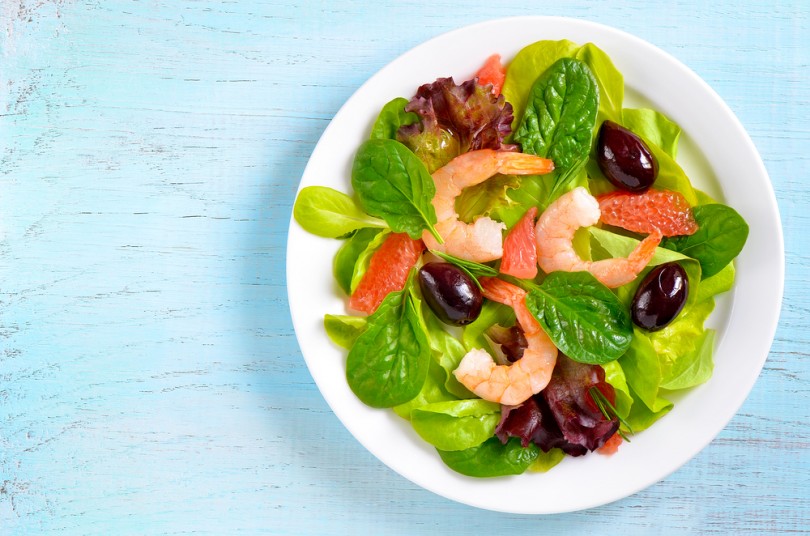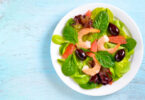Cravings. We’ve all had them. Whether it’s a busy stressful day and we’re craving a sweet afternoon treat, or we’re going through a rough patch and nothing quite takes the blues away like ice cream. And then there are those salty cravings for chips or French fries. Nothing influences our cravings more than stress and burnout. So what exactly are cravings, why do we have them, and how do we curb them?
Food cravings are our body’s alarm bells letting us know that we’re running low in fuel, and vitamins and minerals. Cravings tend to relate to specific nutrient deficiencies in our body. Think of them as the blinking fuel light on a car’s dashboard when the fuel is low. However, in this case, that blinking light is an irresistible urge to eat certain foods. For example, some people will crave chocolate when they have a headache or muscle cramps. Raw cacao powder, which chocolate is made from, is a natural source of magnesium. Magnesium is a natural muscle relaxer. So if you feel a headache coming on and you’re craving some chocolate, you’re body is actually looking for the magnesium in the chocolate, not necessarily the chocolate itself.
The Stress Connection
There are many reasons why we become low in nutrients; and stress and burnout are two of the main reasons. Our bodies know two modes, roughly “stress mode” and “relaxation mode”. When we are in the fast-paced stress mode (or classically stated “Fight or Flight mode”) our bodies to use up key nutrients such as calcium which is needed to keep the muscles tight. If we’re not replenishing these lost nutrients with healthy balanced foods, the body will start to look for them elsewhere. On top of that, some people turn to coffee as a coping mechanism for stress. However the caffeine in coffee (or other caffeinated beverages) is a diuretic that forces our body to lose even more vitamins and minerals when we go to the bathroom. The result is that stress depletes our body of the essential nutrients it needs, and long-term depletion of these key nutrients leads to burnout. And when burnt out, we tend to experience the most intense food cravings.
So we’re stressed, tired, and maybe suffering from burnout, and now that craving starts kicking in. Well, the foods we crave are not only related to the physical impact stress has on our bodies, but also the emotional impact. High stress and burnout can lead to feelings of depression which can cause cravings for foods that release the biochemistry for our brains’ pleasure centers – specifically serotonin and dopamine (neurotransmitters that make us feel happy and alert). This is when we’ll notice insatiable cravings for sweets. When the body is low in its preferred fuel (protein) to make these neurotransmitters, it will go for the fastest source. Essentially our mood can determine our choice of food.
Common Cravings and How to Beat Them
Sugary Snacks and Carbohydrate Cravings
One of the most common food cravings tends to be for sweet sugary snacks. When we are in “stress mode” our body will look for quick sources of fuel to help keep us going. Another reason for sugar cravings is emotional eating. Carbohydrates are used to activate the pleasure centres in our brain. What it boils down to is that although the body is craving sugar, what it’s actually looking for protein. Protein is used in the body for many functions. It can be a source of energy and is an essential building block to our feel good neurotransmitters. To reduce sugar cravings aim to eat a balanced meal that is high in protein and low in carbohydrates. Some of my favourite meal options are a salad with chicken, fish, tofu, beans or lentils, a protein shake (preferably with an unsweetened protein powder), and quinoa instead of rice.
Chocolate
Although chocolate can be considered a sugary treat, it tends to have its own distinct craving that is hard for us to ignore. Chocolate cravings can mean a deficiency in magnesium and/or calcium. Many people are deficient in magnesium and will likely notice symptoms like muscle pains (back and neck), headaches and muscle cramps. Chocolate cravings can also relate to emotional eating as the sugar and calcium combo is relaxing and triggers our brain’s pleasure centre (that serotonin again!). To curb chocolate cravings try foods rich in magnesium like pumpkin seeds, spinach, beans, Brazil nuts and almonds. And if you want to indulge your chocolate craving once in a while, choose a dark chocolate that is made from at least 80% cacao, and low in sugar.
Ice Cream
In most cases a craving for ice cream is related to emotional eating. It’s no coincidence that characters dealing with bad breakups on TV shows are always comforted by a big tub of ice cream! But ice cream is also rich in calcium, fats and protein. Fats are essential for our mental health so if we’re feeling down we’re more likely to crave a fatty treat such as ice cream. Further, the sugar, calcium and protein combination is a strong trigger for the pleasure centres in our brain. Fats are also important for hormonal health. Unbalanced hormones can affect our mood which will trigger the craving for fats. So how do we keep ice cream cravings at bay? Try incorporating sources of healthy fats into your diet on a daily basis. By healthy fats I mean oils that have not been used in cooking such as olive oil, evening primrose oil, and fish oils.
Salty Snacks
Another classic craving is for salty snacks like French fries and chips. On-the-go people will often experience these cravings because our body’s adrenal gland requires the minerals that come from salt. Foods that naturally contain sodium (aka salt) such as seafoods (i.e., seaweeds, fish, etc.) always contain other nutrients in combination with the salt. This is what our body is looking for. This craving can have several meanings such as a deficiency in minerals, or healthy fats, and dehydration. Dark green leafy vegetables are loaded with minerals, and eating them on a daily basis can help to reduce your cravings for salty snacks. Also, keep note of how much water you drink daily. Salt cravings can also be a sign of dehydration. Where salt goes, water is soon to follow. So try drinking a glass of water in place of the salty snack.
Although the above list of cravings is small, they are the top four cravings I commonly encounter in my practice. The bottom line to curbing cravings is to have a healthy balanced diet, no matter what the cravings are.







